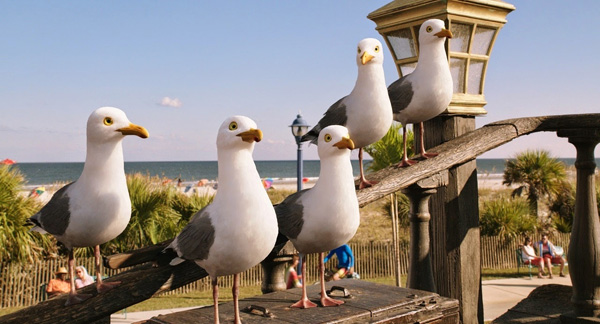For ‘The Spongebob Movie: Sponge Out of Water’, animators and VFX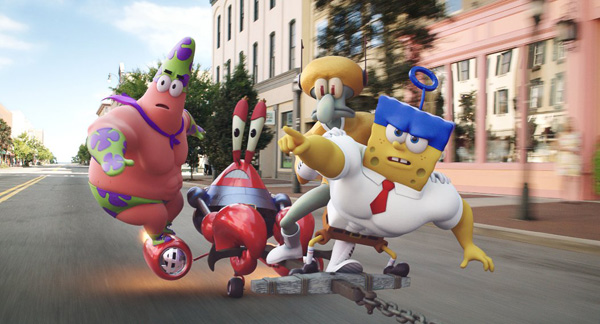
artists at Iloura re-created and animated SpongeBob and his friends as
3D CG characters in a live action world.
SpongeBob Squarepants Jumps to Life in 3D with Iloura |
|
AEAF ENTRY View in Online Festival Animation and visual effects studioIlourahas had the privilege and the challenge of re-creating and animating SpongeBob Squarepants and friends as 3D CG characters for his second movie, ‘The Spongebob Movie: Sponge Out of Water’. The team completed 640 shots for the project, comprised of 2D animation augmented with extended sequences of animated CG composited into live action photography. |
 |
|
SpongeBob and FriendsThe team’s R&D and character design period came mostly during the time Iloura spent preparing their pitch for the project, which was completed over a two or three month period. In that time, they ran movement and distortion tests and worked out how they would need to modify the team’s regular pipeline to deal with the SpongeBob characters. Eventually they developed a series of approaches for re-creating the characters in a 3D environment, in a manner that was sympathetic to the existing 2D animation and immediately recognisable to audiences. Once Iloura was awarded the job, the team spent almost two years on the project from the first meetings to delivery of the final shots. |
 |
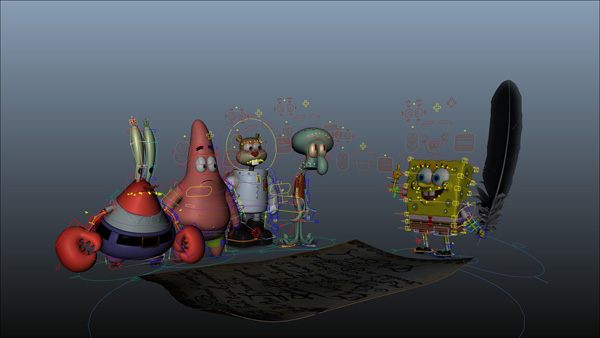 |
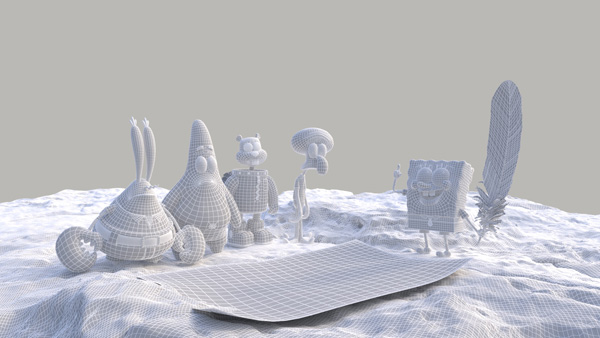 |
|
VFX supervisor Glenn Melenhorst said, “The original animators had never thought about these characters in a 3D environment, and their distinctive shapes had never intended to be viewed from all angles. Therefore, getting SpongeBob and his friends to perform convincingly and look authentic on screen was a special challenge. Even the static toys created by merchandising companies over the years were not especially helpful, as they didn’t need to move, communicate or show personality.” Animation StyleRealising that the client wasn’t expecting SpongeBob to look like a photoreal kitchen sponge, or his starfish friend Patrick to match a true-to-life creature, they began with a set of sculpts in ZBrush. Meanwhile,lead modeller Samuel Jensenproduced macquettes to help the artists visualise the 3D models as they built, rigged and animated the SpongeBob cast. |
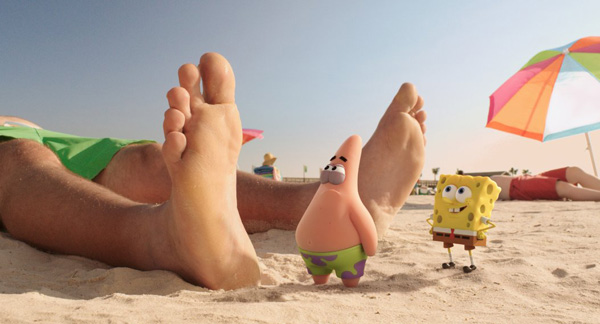 |
|
Between them, the artists at Iloura also had years of collective knowledge of SpongeBob, either as children themselves or as parents. This was helpful when it came to the animation, since there was no list of rules from the client about what was going to make the characters work. It was a matter of watching many hours of video and instinctively knowing when it was right. |
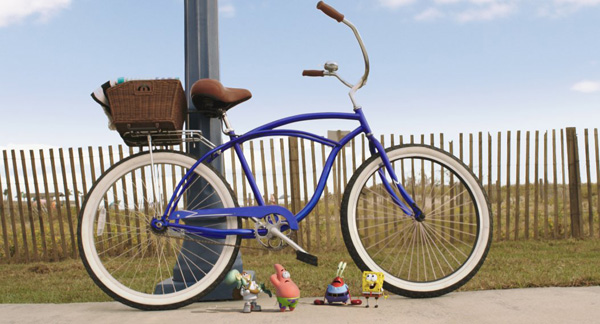 |
|
Post-SculptingIloura was especially keen to avoid turning down requests from Stephen Hillenburg and the movie director Paul Tibbitt about the animation. Instead, they worked on building flexible rigs.Lead CG supervisor Avi Goodman’s rigs allowed them to break the characters to a large extent during performances. Furthermore, whenever they encountered moves that traditional CG could not accommodate, they used a customised post-sculpting process to correct any mistakes caused by pushing the rig too far, or simply to enhance the strength of a pose. |
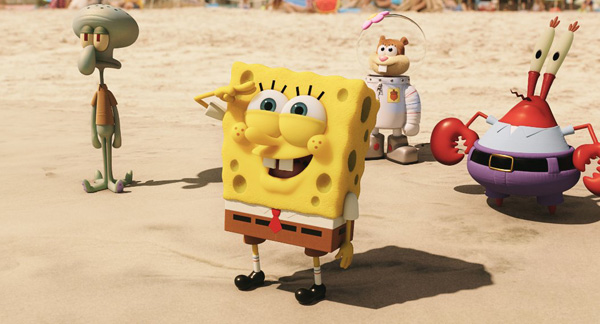 |
|
Pulling FacesFor the facial animation, the team did not work directly with voice actors but based their moves on audio clips. The characters’ faces look deceptively simple. “Even SpongeBob’s face is not that easy to animate. Viewed straight on in 2D, his distinctive round cheeks may or may not be visible, depending on the shot. Also, as he turns sideways the mouth suddenly becomes a sharper triangle shape,” said Glenn. |
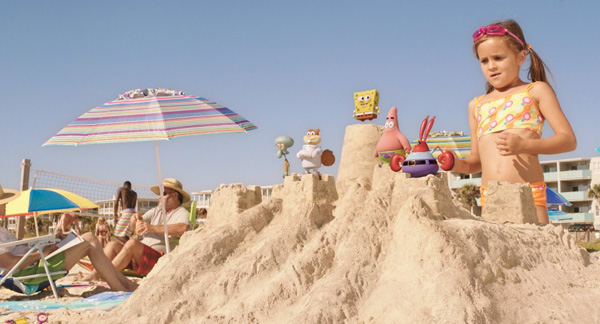 |
|
When they eventually wash up on the beach at a seaside town and venture into live action sequences, the SpongeBob characters are quite small, only about 15cm high, which meant bringing the live action camera down close to ground level. This, in turn, introduced depth of field issues when the animators needed to show the whole group standing together and keep them in focus within the plate. They also needed to consider the physics of being this size in the real world as well, such how large and heavy the grains of sand should be in the particle systems they had to create for interactions, or what would happen to ice cream they interacted with. Simulations for this type of effect were created in Houdini or 3ds Max, and rendered in Max. |
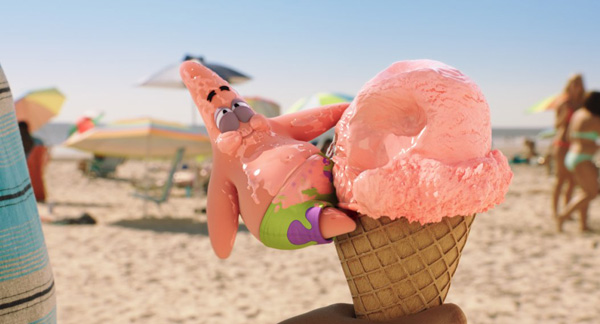 |
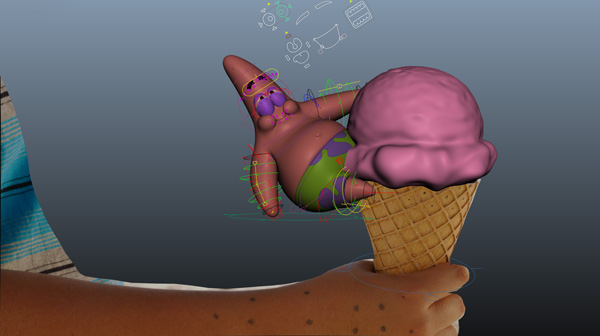  |
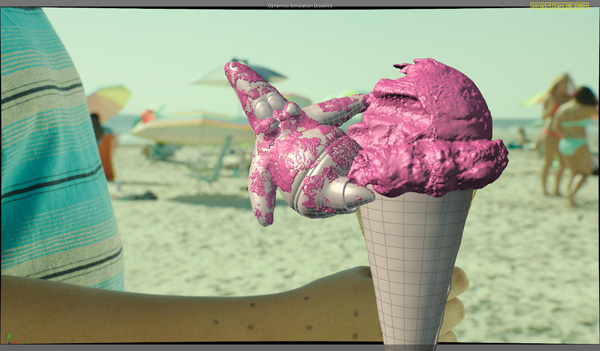 |
Super-sizedEventually, the story takes a super hero twist when the friends scale up into full-sized muscular characters that needed a second, complete set of 3D animated models and rigs. “In a few instances like SpongeBob’s facial features, we could apply what we had learned from designing the smaller characters,” Glenn said. “But overall these super-sized versions were completely new. For example, the character Squidward’s leg count fell from four to only two. Proportions, shapes and moves were all different and required separate rounds of character development, turntables, macquettes and approvals. They even needed new super-heroic outfits - lycra jumpsuits with custom stitching – which added the complexity of character-cloth interactions during animation.” Most of the seaside live action shoot took place under bright sunshine in Savannah, Georgia. Iloura was on set throughout the photography. They knew that integration of the little CG characters into the environment was critical to their success and would take some extra care and attention to detail. Almost every set had to be recreated accurately in 3D in order to place, animate and integrate the CG realistically into the plates, and for that reason LIDAR scans and extensive photography were captured at the shoot locations. |
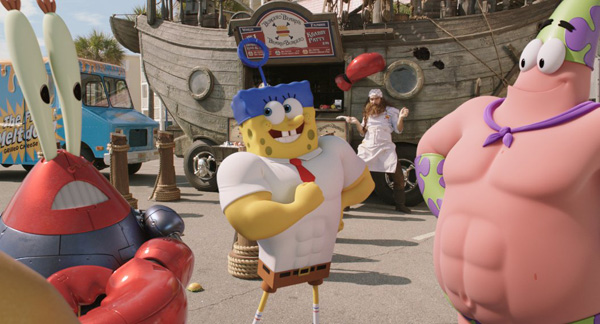 |
|
Stand-in props were used on set as further help to bridge that gap between the live-action and 3D CG worlds. While SpongeBob and his friends were still at their small size, tiny macquettes were placed on set to allow the crew to rehearse shots, using plastic rods to puppeteer them around. Then, after removing the macquettes, the camera moves were recreated for the shoot. Having both versions to refer to in post gave the artists many of the clues necessary to refine lighting, focus and intent of animation. Much larger cut-out props were placed on set to represent the superhero versions, and were vital to set up and frame the shots effectively. |
|
|
Seagulls & SkeletonsIloura’s 3D work for ‘The SpongeBob Movie: Sponge Out of Water’ went beyond SpongeBob and his friends. The flock of seagulls that join Burger Beard on his pirate ship started with a largely photoreal concept, except for a few concessions that made them more expressive and anthropomorphic, such as the design of their eyeballs. Their eyes are larger than real gulls’ eyes and more forward-facing to allow them to work better for their comical songs and the conversations they have with Burger Beard. Otherwise all body mechanics, feathers, wing animations and so on maintained a photoreal approach. The team were almost pedantic about their flight, landings and behaviour on the ground, and kept their beaks intact after finding that putting mouths on them to talk made them too cartoony. |
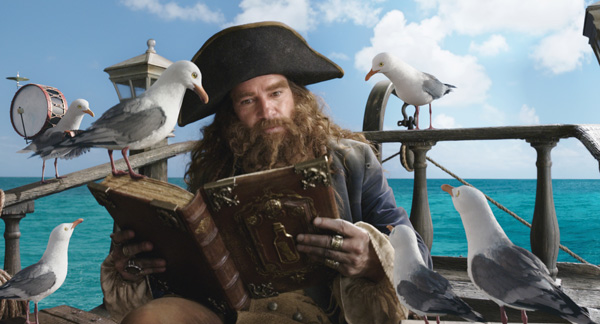 |
|
Pirate ShipThe pirate ship was variously a live action or a partly or completely CG asset. Its sails, mast and ship’s rigging were digital in every case. When we see Burger Beard at sea with the seagulls, the actor was shot in a physical ship on a green screen stage in a studio. Iloura replaced the backgrounds with plates they shot in Hawaii. When we see it driving through town, it is a driveable prop. |
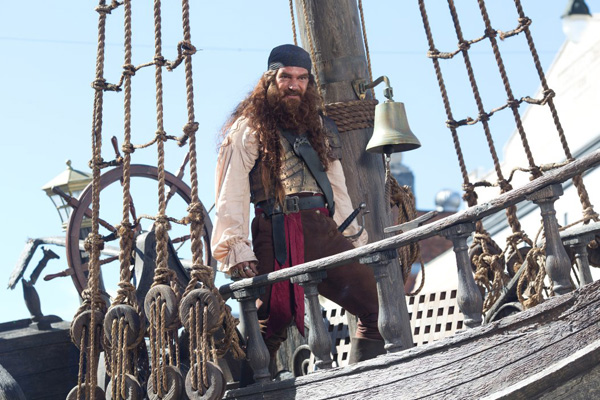 |
|
ThePelican Islandsequence in the story was a special effort from the CG team. They decided that everything, from the island’s rocky outcrop with waves crashing round it, to the pelicans swooping around overhead, would look best if the shots were entirely digital. The ocean was the primary challenge. Iloura’s team have been using Naiad for water simulations for several years, since before it was acquired by Autodesk, and used it very effectively in the movie not only for this island sequence but for most of the water interactions in the green screen and beach town sequences as well. www.iloura.com.au |


